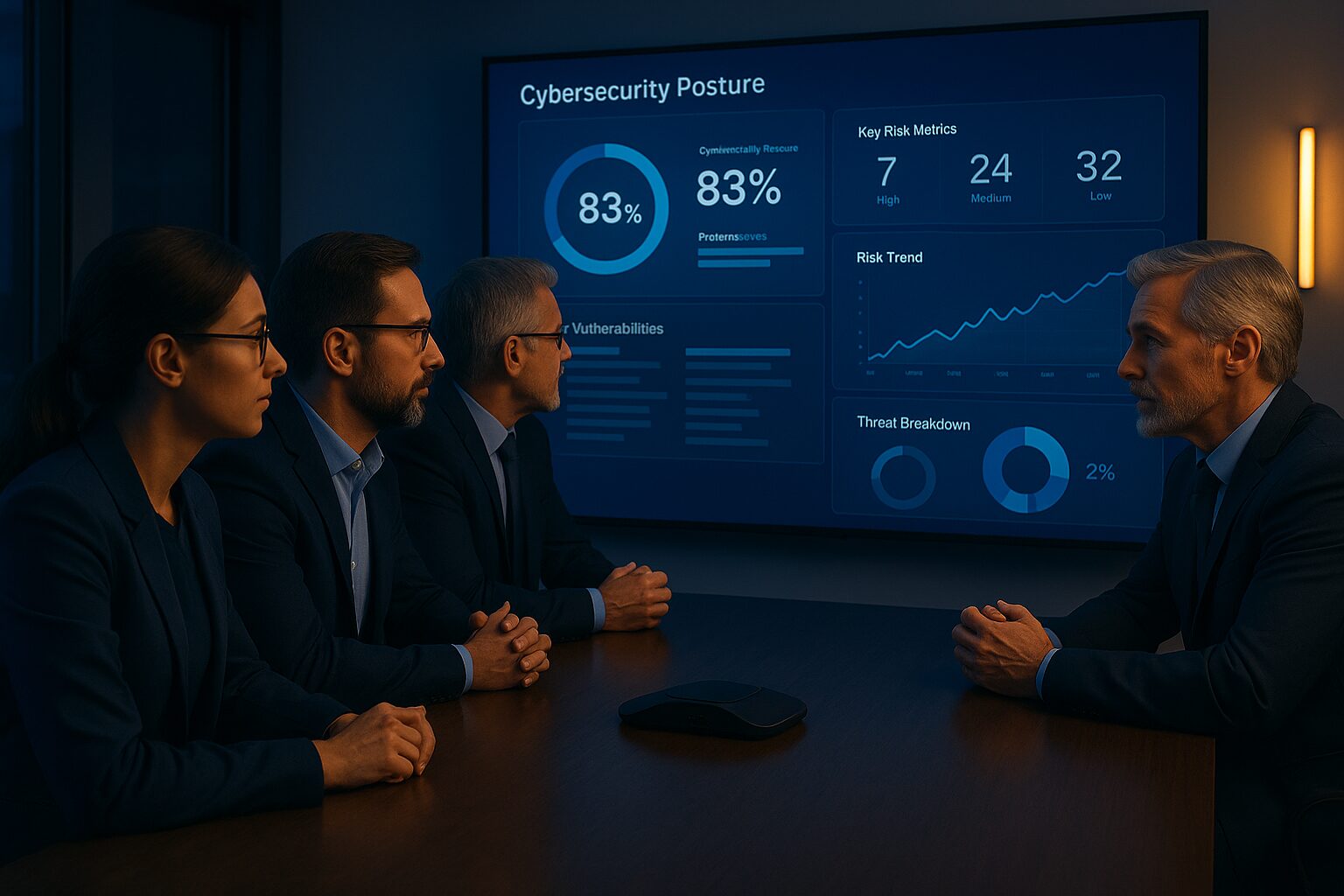The Digital Age calls for increased cybersecurity. This article will help you to better understand Zero Trust Security and how it can help fortify your business.
Threats Are Evolving
Finding the right cybersecurity solutions can be challenging. Cyber threats are constantly evolving and require continuous monitoring to protect data from unauthorized access and misuse. Zero trust architecture is a security framework that offers superior identity and access management through multi-factor authentication (MFA) and other advanced security measures. Implementing zero trust for your business can provide your company with improved access controls and better network security. Here are some basics of the zero trust approach to cybersecurity.
What Is Zero Trust Architecture?
The National Institute of Standards and Technology (NIST) defines zero trust in NIST SP 800-207 as a security strategy focusing primarily on resources, digital assets, and users. A zero trust strategy can reduce insider threats posed by traditional network setups by requiring identity verification for every user inside or outside the network perimeter.
The paradigm shift from traditional networks to cloud services requires a new approach to security architecture. Data breaches of firewalls and threats from unauthorized network traffic are no longer the most prevalent vulnerabilities for sensitive data. Managing permissions and implementing modern security architecture using the principles of zero trust can provide real-time protection and allow you to provide the best possible user experience while protecting critical assets and apps.
Core Principles of Zero Trust
Forbes has identified five core principles of zero trust that characterize this modern security model. These principles include the following:
- Never trust based on location: Traditional network security strategies rely on whitelisted IP addresses to authenticate and authorize network access for specific users. The zero trust framework reverses this strategy and will never trust based on location alone. Instead, robust authentication and authorization strategies are used to establish user identity and provide secure access for end users. Zero trust assumes that all IP addresses and users are untrustworthy until they are properly authenticated and authorized to access your systems.
- Assume the attack surface is inside as well as outside the network: Another critical difference between traditional network security methods and zero trust security is the concept of network segmentation. Rather than one large security perimeter that surrounds the entire network, zero trust security methods create multiple perimeters around key assets. Micro-segmentation can be used to create perimeters around essential apps, APIs, and legacy systems to provide superior data protection for these systems within the larger network. By implementing network segmentation, it is possible to prevent lateral movement within the network by unauthorized intruders and other types of cyberattacks.
- Maintain authentication and authorization for all devices, users, and networks on a least-privilege basis: The principle of least privilege states that each entity should be granted the minimum resources, authorizations, and access necessary to perform its specific function. Entities may include users, processes, or programs. By allocating only the resources and access required for these entities to do their jobs, the principle of least privilege prioritizes those with greater needs and reduces potential threats within the network. Least privilege can also minimize damage to network resources if user identities are compromised and misused in cyberattacks.
- Treat all networks, known or unknown, as potentially hostile: In zero trust security implementations, every network, including your own, could contain threats to your data and applications. Continuous monitoring and user identity checks are key elements in managing remote work logins and dealing with various providers for software-as-a-service, cloud computing services, and other endpoints for your secured network. By performing security checks and requiring multi-factor authentication for those accessing your network resources, zero trust security is redefining the network security industry.
- Establish robust data analytics: Instituting end-to-end data analytics to monitor activity and detect threats is a requirement for implementing zero threat security. Taking a vigilant security posture is essential to make your zero trust implementation work effectively.
Understanding the most important elements of implementing zero trust can help you prepare effectively for the new generation of network security.
Key Elements of Zero Trust Security Implementations
To implement zero trust security for your company, you must first prepare your networks for these advanced cybersecurity solutions. Some tasks that will streamline your implementation are listed here:
- Instituting strong identity measures can allow you to provide a better user experience and more secure access for your staff and customers. Robust identity and access management are key parts of implementing zero trust frameworks for your business networks. Multi-factor authentication and registration of devices can provide added assistance in implementing zero trust frameworks and adopting a strong security model.
- Monitoring endpoint health is also part of a comprehensive and integrated approach to data security. Endpoints are the physical devices used to access the network and its resources. Ensuring these devices are in proper working order and correctly secured can reduce vulnerabilities within your organization.
- Establishing update procedures on a centralized basis will keep your networked devices safer and improve staff productivity. Regular updates are important in providing robust data security for your network and can help your company avoid insider threats caused by poorly maintained devices and infrastructure.
- Maintaining continuous monitoring of your network activities and processes can ensure that data breaches and compromised devices are identified and remediated quickly. Depending on your staffing situation, it may make sense to outsource monitoring activities to a company that specializes in these cloud services.
- Automating systems to ensure consistency for your security activities is integral to implementing the zero trust security model for your business. By consistently repeating the same monitoring and security activities, you can achieve the best possible security for data, applications, and networks.
- Creating a context for security events requires aggressive data collection and monitoring of all devices, users, and applications. Proactive monitoring and data collection are keys to success in implementing zero trust.
- Instituting a solid security program may require outside help to ensure the best results. Companies that specialize in customized cybersecurity solutions can be great resources in establishing the right zero trust approach for your business operations.
The Internet of Things (IoT) and office automation tools can sometimes create added challenges in implementing zero trust for your business. Working with cloud services providers with experience in the cybersecurity field can help you create a zero trust approach that works for you and your company.
IoT and Automation Challenges for the Zero Trust Framework
IoT poses some unique challenges for securing networks and protecting your operations. All communications with devices must be secured and managed by default, regardless of their network location. Authenticating and authorizing each device, however, can sometimes put a strain on available bandwidth and resources. Finding the right solutions for secure connections may require the services of a professional cloud services company to ensure full interoperability.
Demands for access to network resources, including IoT devices, must be prioritized appropriately to maintain productivity and proper functionality for all aspects of your operations. By creating a dynamic policy that first identifies the source of the request and then allows or denies access on a priority basis, you can prioritize key IoT activities and processes while managing other network traffic effectively. This can balance user experience with functionality for your systems.
Pain Points for Adopting the Zero Trust Framework
When adopting a zero trust approach for your device and network security needs, a few common pain points may occur during the transition from traditional networking to this security model:
- Legacy systems may require tweaking or network segmentation to provide added protection. These systems can sometimes represent vulnerabilities in your company’s network.
- Major changes to security strategies will likely be required when making the move to a zero trust approach.
- Lack of user buy-in can make implementing new security measures and user identity requirements difficult. Educating your staff about the benefits of the zero trust framework can reduce resistance from employees.
- The complexity of security systems can make it difficult for in-house IT staff to handle continuous monitoring and management of your networks. Outsourcing these activities can save time and reduce stress on your IT professionals.
- The potential for gaps in cybersecurity coverage will not disappear. Working with a professional firm to identify areas of concern often allows you to provide secure access for users while protecting sensitive data from unauthorized access or misuse.
- Inadequate support for maintenance and administrative tasks can result in reduced effectiveness for your new zero trust approach. Outsourcing tasks or adding more staff may be required to ensure the best possible results.
- Failure to secure devices and educate users can reduce the effectiveness of your new security model. In-house training sessions may be required to achieve the best possible results for your implementation.
At Meriplex, we offer practical cybersecurity and networking solutions tailored to suit your company’s needs. Our services can make it much easier for you to educate your staff about cybersecurity and promote a safer and more secure environment in which to operate. Contact our team today to learn more about zero trust and how it can help your company achieve the best network security. We are here to help you manage all aspects of network and data security for your business operations now and in the future. Contact us for more information



